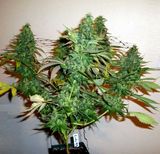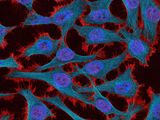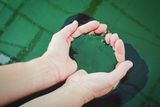Author: Rositsa Tashkova, Master of Molecular biology and Microbiology
Unfortunately, statistics show that breast cancer ranks second among cancers leading to death in the fair sex. Early diagnosis is the main method of prevention. It is an important factor in the successful treatment of cancer. Fortunately, in recent years it has become clear that scientists are trying to develop vaccines against the insidious disease.
Risk factors and causes for breast cancer
The risk factors and causes that can lead to the development of breast cancer are many, and their action occurs with the simultaneous presence of several of them. It should be noted that genetic predisposition is a key factor. Preventive examinations are mandatory, especially in families where there has been such a problem.
-
Mutations in BRCA1 and BRCA2 genes
Scientists pay great attention to the BRCA1 and BRCA2 genes [ref.1] which in a normal state prevent the uncontrollable growth of cells and their modification into cancer cells. The appearance of mutations in these genes may interfere with the performance of their protective functions. Fortunately, some women with such mutations never develop breast cancer. Therefore, testing for such genetic changes is not part of routine screening. It is performed only at the decision of the doctor for a specific reason.
-
The link of breast cancer to ovarian cancer
Numerous studies have proven that mutations in these genes are associated with the development of cancer not only of the breast, but also of the ovaries [ref.2]. Because the mutated genes are hereditary, rather than spontaneously occurring, women who have suffered from an ovarian tumor caused by a mutation in the BRCA1 or BRCA2 genes are at increased risk of developing breast cancer as well.
-
Breast cancer likelihood is reduced by having more children and longer breastfeeding
In developing countries, more children are born, and breastfeeding periods for a woman on average are longer. According to The Collaborative Group on Hormonal Factors in Breast Cancer, if women from developed societies follow this example, morbidity will drop from 6.3 to 2.7 women per 100 [ref. 3]. Of course, childbirth cannot be a method for cancer prevention, but the benefits of breastfeeding are great for both the baby and the mother.
-
Oestrogen
There is growing evidence that the female sex hormone estrogen is related to breast cancer [ref.4]. The disease has three main subtypes: triple negative, HER2-positive and hormone-receptor positive (estrogen- and progesterone-receptor-positive). Two-thirds of all breast tumors are estrogen-receptor positive (ER+), which means that there are estrogen receptors on the surface of tumor cells and they respond to the hormone circulating in the blood.
Other probable causes and factors:
- Too early onset of menstruation (11-12 years);
- Late menopause (after 55 years);
- Late first pregnancy (after 35 years);
- Short periods or complete lack of breastfeeding;
- A smaller number of pregnancies;
- Abortions;
- Obesity;
- Alcohol (more than 1-2 cups per day);
- Lack of physical activity;
- Hormone replacement therapy [ref. 5];
- Age: two-thirds of those who fall ill are over the age of 55.
Breast cancer prevention
The main way to prevent breast cancer is to conduct regular preventive examinations [ref.6]. This includes annual visits to a specialist mammologist, who uses an ultrasound in younger women who have no complaints or a family history, and a mammogram after the age of 35. For women who have close relatives with breast cancer, it is recommended to start mammography examinations after the age of 30.
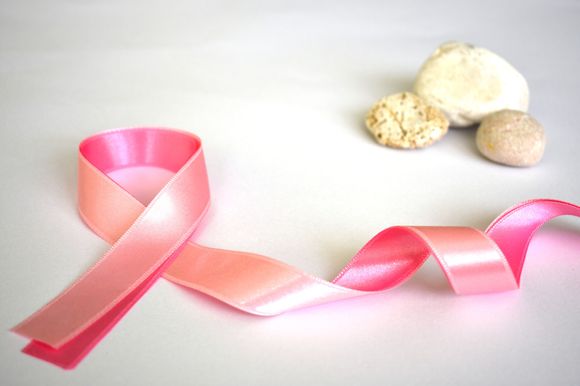
The mammogram uses weak X-ray radiation and is used both for the prevention and diagnosis of breast cancer. It detects dangerous formations at a very early stage, when they are not large enough to get a hand - the so-called palpation. It takes two years for the formation to grow before it can be palpated.
In addition to prophylactic examinations, each woman should pay attention to whether there are changes in her breasts herself. It is good to watch for symptoms such as lumps, including under the arms, leakage of secretions from one breast, changes in the appearance of the nipple or skin. The disease is insidious and lumps are usually not painful and can go unnoticed on their own inspection. Therefore, examination by a doctor is the best prophylaxis.
Lifestyle is also relevant for the prevention of breast cancer - a factor that is most often overlooked. Alcohol and obesity increase the risk of developing the disease. The best treatment is prevention. It is therefore worth making an effort before it is too late - limiting harmful habits, sport and good physical shape can make a significant contribution to reducing the risk of developing breast cancer. According to a 2010 study [ref.7], 26.8% of all cases of the disease in the UK are related to lifestyle and environmental factors.

In women who are at very high risk of developing the disease, extreme measures such as mastectomy [ref.8] can also be taken - preventive removal of breasts. Angelina Jolie is one of the examples of a woman at high risk of the disease who has taken this bold step. But understandably, this procedure can have a very negative psychological and emotional impact and should not be applied to women for whom there is no definite concerns.
Also in women at high risk of breast cancer, chemoprevention [ref.9] can also be administered. Chemoprevention should not be confused with chemotherapy. This is the use of drugs that block estrogen receptors or lower the amount of estrogen in certain tissues. Such therapy can be prescribed only by a doctor, taking into account the risk of breast cancer in a particular woman, as well as the side effects of drugs.
Herbs that may help in the treatment of breast cancer
There are herbs and medicinal plants that seem to have some potential to support the treatment of breast cancer. They do not treat it on their own, but under medical supervision can have a beneficial effect on the patient's condition.
Such plants and herbs are [ref. 15]:
-
Eastern purple coneflower (Echinacea purpurea) - flavonoids act as an immunostimulant and are present in the echinacea. They promote the activity of lymphocytes, increase phagocytosys in macrophages and the action of NK-cells, and also reduce the harmful effects of radiation therapy and chemotherapy. Flavonoids can help prolong the life of patients with progressive stage of cancer.
-
Garlic (Allium sativum) - the anticancer activity of garlic is probably due to the large amount of organic sulphides and polysulfides, the strengthening of immune defenses (the number of suppressor T cells increases and turns lymphocytes into a form that kills cancer cells), etc. It is believed that garlic can relieve chemotherapy and radiation therapy sife effects.

-
Turmeric (Curcuma longa) - curcumin, the active ingredient of turmeric, is present in its rhizome and base. Curcumin is known to have anti-cancer action due to its phenolic substances. Мultiplication of cancer cells in the lungs, breast, skin and stomach is also limited by curcumin. It also increases the body's natural antioxidant activity.
-
Burdock (Arctium lappa) - it stimulates the action of macrophages, restricts the multiplication of cancer cells and has immunomodulating properties.
-
Asian ginseng (Panax ginseng) - the active substances of ginseng reduce or block the tumor necrotizing factor in the skin of mice, block the multiplication and metastases of cancer cells, stimulate the differentiation of cells and affect the level of interferon. Ginseng is most active in the form of extract and dried powder to prevent the onset of cancer.
- Flaxseed, vitamin D, green tea and plants rich in carotenoids.
Is there a vaccine against breast cancer
At the beginning of October 2019, immunologist Dr. Keith Кnutson [ref. 10] from Mayo Clinic announced that a breast cancer vaccine is expected to be available within 8 years. It will be a product of the hard work of his team. The vaccine will be used both in prevention and as a concomitant treatment of cancer.
Dr. Кnutson says that immunologists at the clinic are ready with two vaccines - against triple negative breast cancer and against HER2-positive cancer, and one against ductal carcinoma in situ is currently being developed.
In his words [ref.11], these vaccines are effective and have no side effects, but before they are placed on the market, large-scale clinical studies need to be conducted to prove this to the U.S. Food and Drug Administration.

Clinical trials
It should be considered that when it is claimed that a drug is ready, it does not always mean that it has been put into use. Before it reaches the patients that need it, each medicine is subjected to a clinical trial. It involves several phases [ref. 12] and takes years. Usually the first phase involves a small number of people (20-80) and aims to establish the safety of the substance, dosage and side effects.
In the second phase of the trial, 100-300 volunteers take part, establishing the efficacy of the drug. Phase 3 includes several thousand people - efficacy, effectiveness, safety are confirmed and compared to pre-existing therapies.
Of course, clinical trials are extremely expensive - typically Phase 2 costs between $12 million and $20 million, and Phase 3, in which the largest number of people participate, can cost double that.
The NeuVax vaccine
In addition to the projects of Dr. Кnutson and his colleagues, there are more scientific groups working on the topic, and one of the vaccines being developed has already gone through the final phase 3 of clinical trials - this is NeuVax [ref. 13]. It targets breast cancer associated with HER2 - a protein that promotes cell growth and when things are out of control - leads to tumor formation.
Mechanism of action of the breast cancer vaccine
Similar to traditional vaccines that train the immune system to attack specific disease-causing microorganisms, the breast cancer vaccine aims to activate our own immune system to fight against the causative agent of the disease - in this case, cancer cells.
This is possible because the cells of different types of cancer are associated with the production of specific molecules - antigens, different for each type. If immune cells learn to recognize these particular molecules as hostile, they will attack the cells that produce them as soon as they appear in the body.
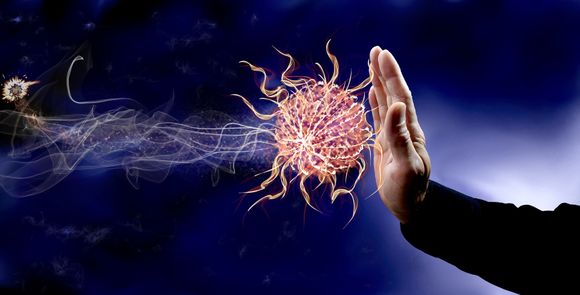
Potentially dangerous cells constantly arise in our body, but there are mechanisms by which they are removed from the body without even knowing that this has happened. Diagnostic methods [ref. 14] have now reached precision that allows doctors to detect tumors at a very early stage, but unfortunately we do not know which of these microscopic formations the body would deal with on its own and which will continue to develop.
The appropriate vaccine would prevent the onset of cancer
The existence of a suitable cancer vaccine would significantly help the body's own forces to cope with emerging cancer cells. But unfortunately, each type and even subspecies of cancer is different from the others, and it is not possible to create one vaccine against everyone.
However, women who have already fallen ill will receive powerful support in their treatment if vaccinated. For those at high risk of developing the disease, especially hereditary, the appropriate vaccine would prevent the onset of cancer in the very beginning. Therefore, we really hope that only a few more years will separate us from the successful treatment and prevention of breast cancer.




